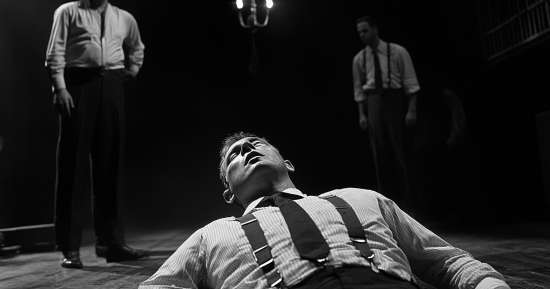
Are you ready to test your knowledge of Arthur Miller’s classic play Death of a Salesman Full Book Quiz, Test Your Understanding of Arthur Miller’s Tragic Masterpiece. The Death of a Salesman Full Book Quiz challenges your comprehension of Arthur Miller’s seminal drama, exploring its themes, characters, dramatic techniques, and cultural significance. As one of the most celebrated plays in American literature, Death of a Salesman presents a gripping examination of self-deception, the pursuit of success, and the crushing weight of unmet expectations. This quiz will assess your ability to analyze the narrative structure, symbolism, and psychological depth of the play while unpacking the layers of Willy Loman’s tragic downfall.
Willy Loman, a disillusioned traveling salesman, believes personal charm guarantees success. His outdated ideals clash with capitalist realities, leaving him frustrated and mentally unstable. His mind fractures under pressure, leading to hallucinations and self-deception.
If you’ve mastered the full scope of Death of a Salesman, why stop here? See how well you remember the finer details of the play’s opening by taking the Death Of A Salesman Act 1 Quiz. Or, if you love analyzing Miller’s language, test your skills with the Death Of A Salesman Quote Identification Quiz. And for a deeper look at the play’s haunting conclusion, explore the emotional weight of Willy’s final moments in the Death Of A Salesman Requiem Quiz.
Ready to Test Yourself? Start the Death Of A Salesman Full Book Quiz
Willy Loman’s Struggle with Reality and the American Dream
Miller presents Willy’s breakdown through a mix of realism and expressionism. The audience sees his past as vividly as his present, highlighting his inability to separate memory from reality. His tragedy lies in his refusal to face the truth.
Biff and Happy: The Sons Trapped in a Broken Dream
Biff, once full of promise, realizes his father’s dreams were empty. His turning point comes after failing to secure a job with Bill Oliver. Instead of embracing illusion, Biff chooses honesty, rejecting the false ideals imposed on him.
Happy follows Willy’s flawed beliefs, valuing status over substance. Even after Willy’s death, he remains trapped in the same delusion, vowing to prove his father was right.
Linda Loman: The Loyal Enabler of a Doomed Man
Linda loves Willy unconditionally, defending him even as his mental state declines. She urges Biff and Happy to support their father, despite knowing the depth of his suffering.
Her final words, “We’re free… we’re free,” carry deep irony. Willy’s sacrifice finally provides financial stability, but emotional peace remains unattainable.
Key Symbols and Motifs in the Play
Arthur Miller weaves powerful symbols throughout the play:
- Stockings: Represent Willy’s guilt over his affair and his financial struggles.
- The Rubber Hose: A chilling reminder of his suicidal intentions.
- Seeds: Symbolize his desperate attempt to leave something behind.
- Ben’s Ghostly Presence: Reflects Willy’s obsession with success and lost opportunities.
Each symbol reinforces Willy’s fears and internal conflicts, shaping the play’s emotional core.
Miller’s Theatrical Innovations and Narrative Structure
Miller’s non-linear storytelling immerses the audience in Willy’s unstable mind. Past and present bleed together, reflecting his mental collapse.
His approach redefines tragedy, shifting from noble figures to an ordinary man. Willy’s downfall stems from self-delusion rather than fate, making his story deeply personal and universally relatable.
The Cultural and Historical Impact of Death of a Salesman
Since its debut in 1949, the play has remained a defining work of American theater. It critiques capitalism, social pressures, and the illusion of success. Willy’s struggles resonate with generations of audiences, proving the timeless nature of Miller’s message.
How Well Do You Know Death of a Salesman?
Arthur Miller’s play explores dreams, failures, and the search for self-worth. Whether analyzing Willy’s mental decline, Biff’s realization, or the play’s use of dramatic structure, this quiz will challenge your literary insight.
Take the Death of a Salesman Full Book Quiz and see how well you understand Miller’s tragic masterpiece!
Death Of A Salesman Quizzes: Explore the American Dream’s highs and lows …
Death Of A Salesman – FAQ
“Death of a Salesman” is a play written by Arthur Miller in 1949. It is a tragic story that delves into the life and struggles of Willy Loman, a failing salesman, as he grapples with the realities of the American Dream and his own sense of worth.
“Death of a Salesman” explores several profound themes, including the American Dream, reality versus illusion, and family dynamics. It critiques the idea of success in American society, questioning the value placed on material wealth and professional achievement. Personal and familial conflicts further highlight the tension between aspirations and reality.
Arthur Miller employs various symbols throughout “Death of a Salesman” to enhance the narrative. Key symbols include seeds, which represent Willy’s desire to leave a tangible legacy, and the rubber hose, symbolizing his suicidal tendencies. The recurring motif of the flute music evokes memories of Willy’s father and a simpler, more idyllic past.
“Death of a Salesman” has had a profound impact on American literature and theater. It won the Pulitzer Prize for Drama and the Tony Award for Best Play in 1949. Its critical examination of the American Dream and its poignant portrayal of human struggles have made it a timeless classic, influencing countless works and continuing to resonate with audiences worldwide.
